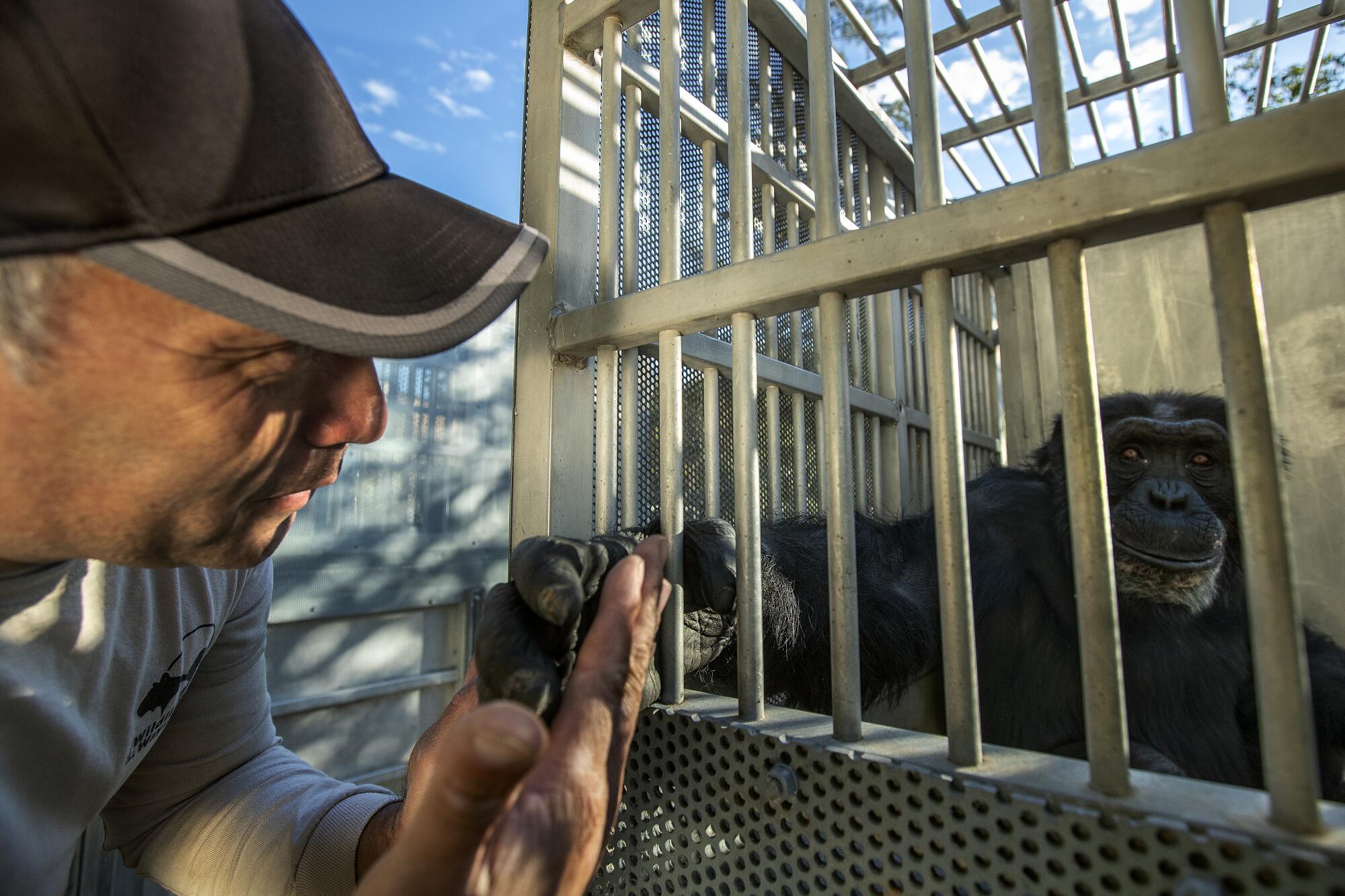
- Share via
The morning began like so many others for the last 10 chimpanzees stranded at the shuttered Wildlife Waystation in the Angeles National Forest: whiling away the hours, spinning around and around, pushing toys across concrete floors and peering through the bars of their cages.
Three years after the refuge abruptly closed due to financial difficulties, the chimps taken in from biomedical research labs were the only creatures left in the 160-acre facility’s eerily quiet labyrinth of empty cages and pens that once housed more than 500 exotic animals, just north of Los Angeles city limits.
But a big change was coming for these chimps who had never climbed a tree or galloped across grass and they knew it — at least judging from their shrill cries of “OO-OO-OO-AH!”
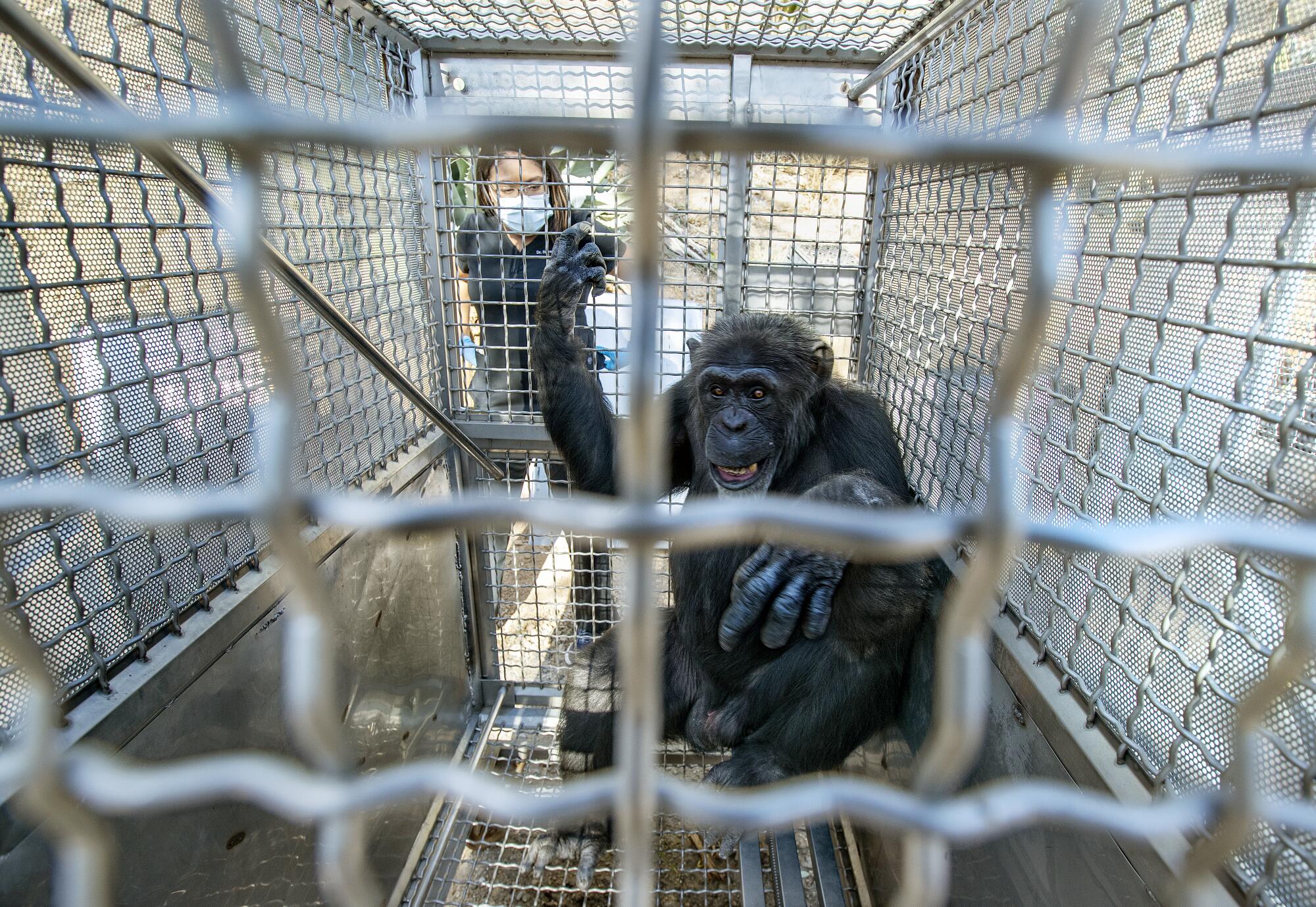
The scene unfolded when caretakers used monkey chow biscuits to coax eight of the chimps into special shipping containers. The pens were then loaded onto a truck and trailer specially outfitted to transport them 1,600 miles to Chimp Haven in Keithville, La., a 200-acre facility caring for over 300 chimpanzees, most of them retired from research labs.
They arrived late Sunday — weary primate refugees clutching travel blankets emblazoned with pink hearts.
The other two chimps at the Wildlife Waystation were expected to be transported to Chimp Haven within a few weeks.
“It’s a totally new beginning for these chimps,” said Rana Smith, 58, chief executive officer at Chimp Haven. “They’re at a better place.”
Life was about get interesting for Amber, 31; Mousse, 37; Axil, 29; Buster, 28; Connor, 29; December, 29; Denise, 30; Inky, 29; Tequila, 29, and Mocha, 31.
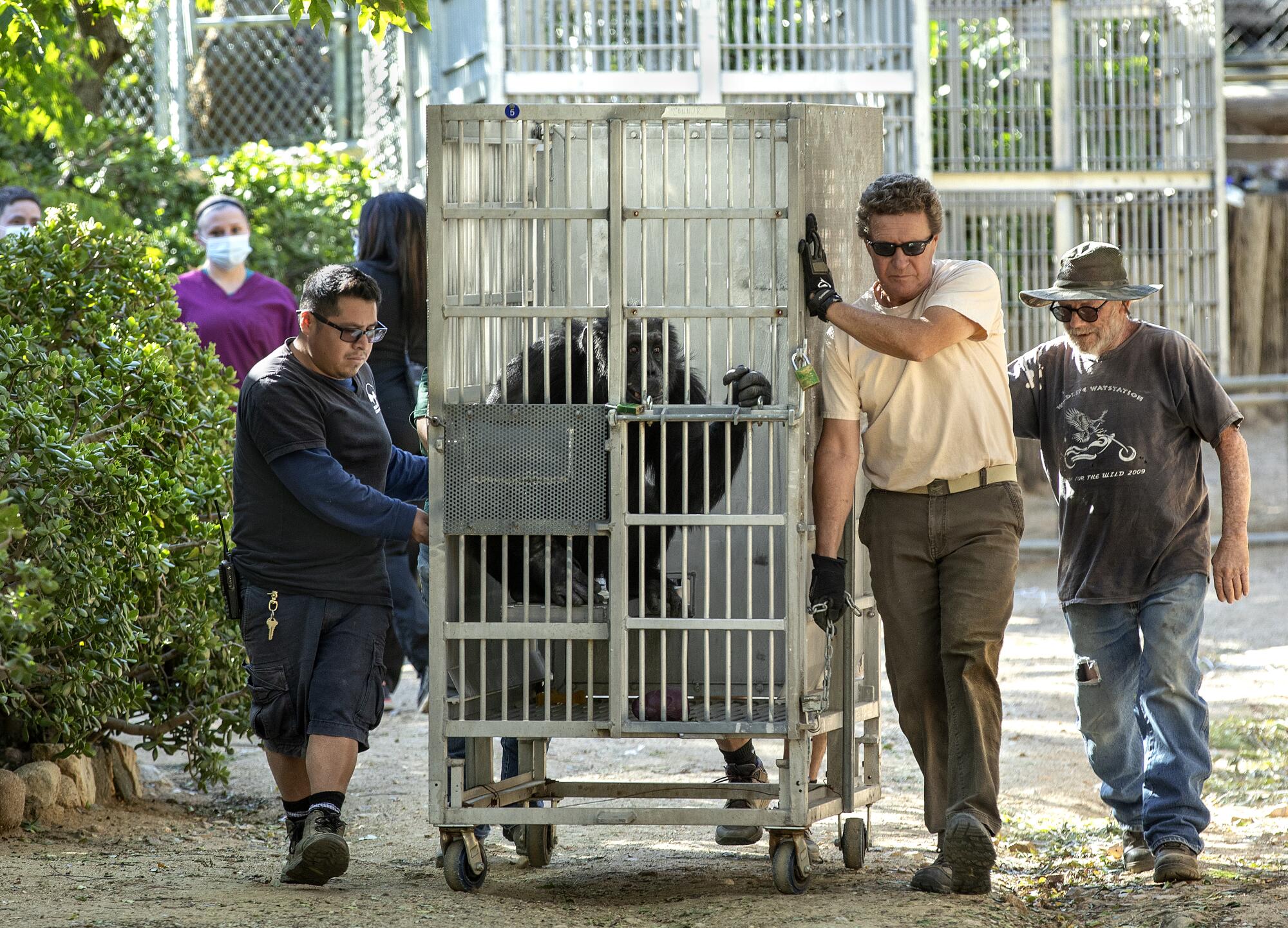
Chimp Haven is a place where chimps roam woodlands and grassy fields and are housed in indoor-outdoor enclosures where they can be warm when it’s chilly outside.
“The other chimps will teach these newcomers how to climb trees and not be afraid of natural substrate such as grass,” said Raven Jackson, 41, chief veterinarian at Chimp Haven. “It’s a beautiful thing to behold as they evolve into a semblance of their natural selves.”
The move marked the end of a tumultuous saga that began when the refuge was established in 1977 by the late animal welfare advocate Martine Colette to house abused, abandoned and sick animals. Some of them carried diseases that they were infected with as part of medical research projects.
Colette, who died in January, raised millions of dollars in donations for her cause and boasted glamorous and well-connected supporters including former Los Angeles Mayor Richard Riordan and actors Laura Dern, Will Smith and Jeff Goldblum.
But behind the refuge’s 10-foot perimeter fences were signs of trouble shared by animal sanctuaries that live and die on the donations of others.
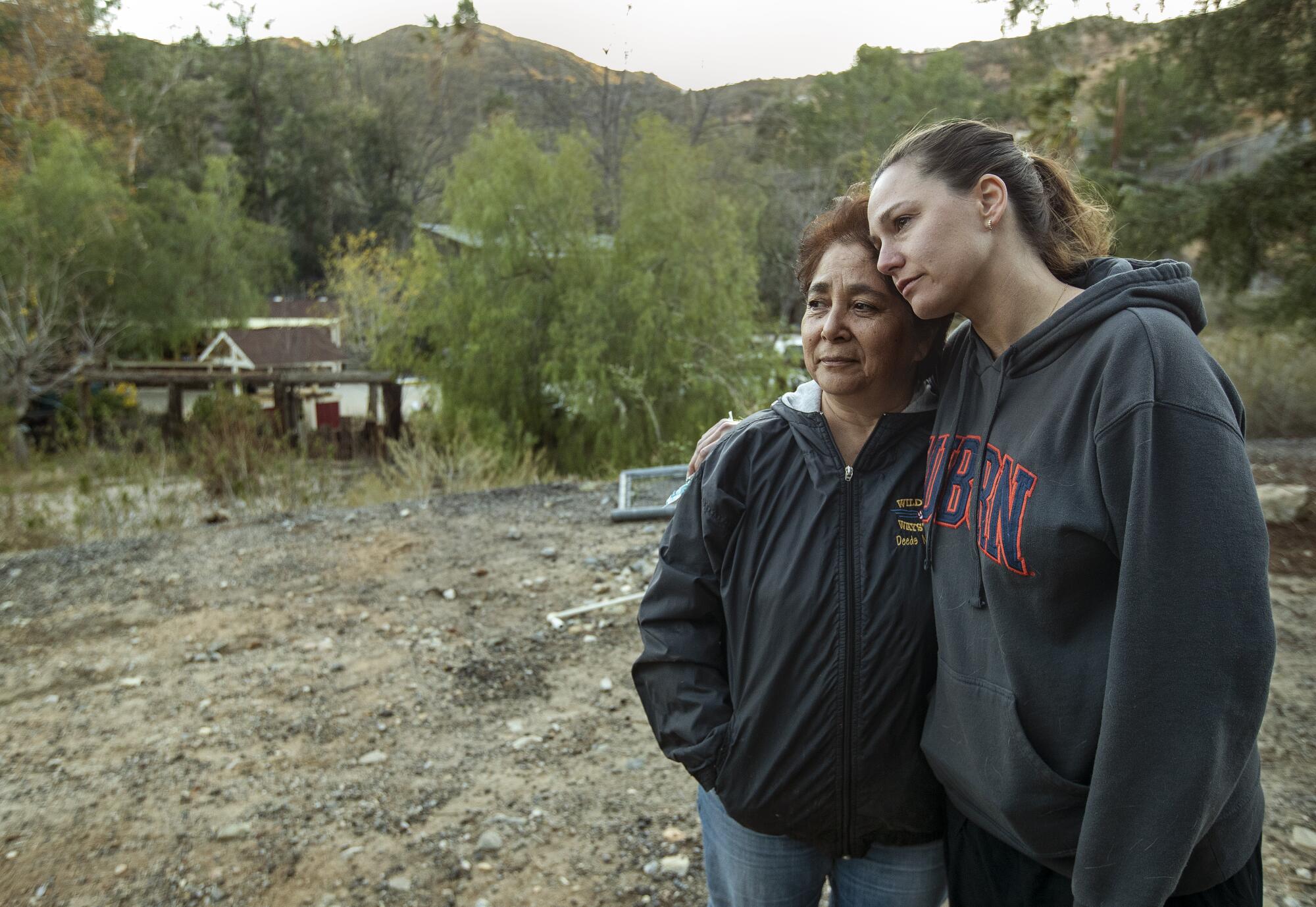

Over the years, it was plagued by a seemingly endless series of disasters and legal problems, including floods and wildfires; drought; financial squabbles among board members; and hundreds of health, sanitation and other code violations cited by local, state and federal authorities.
The final spiral downward followed extensive damage caused by the 2017 Creek fire and again during subsequent extreme flooding requiring insurmountable funding to meet current regulatory standards.
The facility surrendered its state permits in 2019, triggering an emergency collaboration among the California Department of Fish and Wildlife; Kate Thompson, the last board member of the Wildlife Waystation; and the nonprofit North American Primate Sanctuary Alliance.
The department took charge of the refuge and responsibility for finding acceptable new homes for hundreds of animals, including baboons, tigers, alligators, wolves, owls, and Vietnamese pot-bellied pigs, as well as 42 chimpanzees.
“We stepped in to prevent a potential catastrophe,” recalled Ed Pert, a spokesman for the Department of Fish and Wildlife. “But we had no idea how difficult it would be to find new homes for the chimps.”
That’s because demand for sanctuaries had skyrocketed after the use of chimps in research ended in 2015. Beyond that, potential enclosures for the agile and intelligent animals had to be large and strong enough for them to stay busy and occupied.
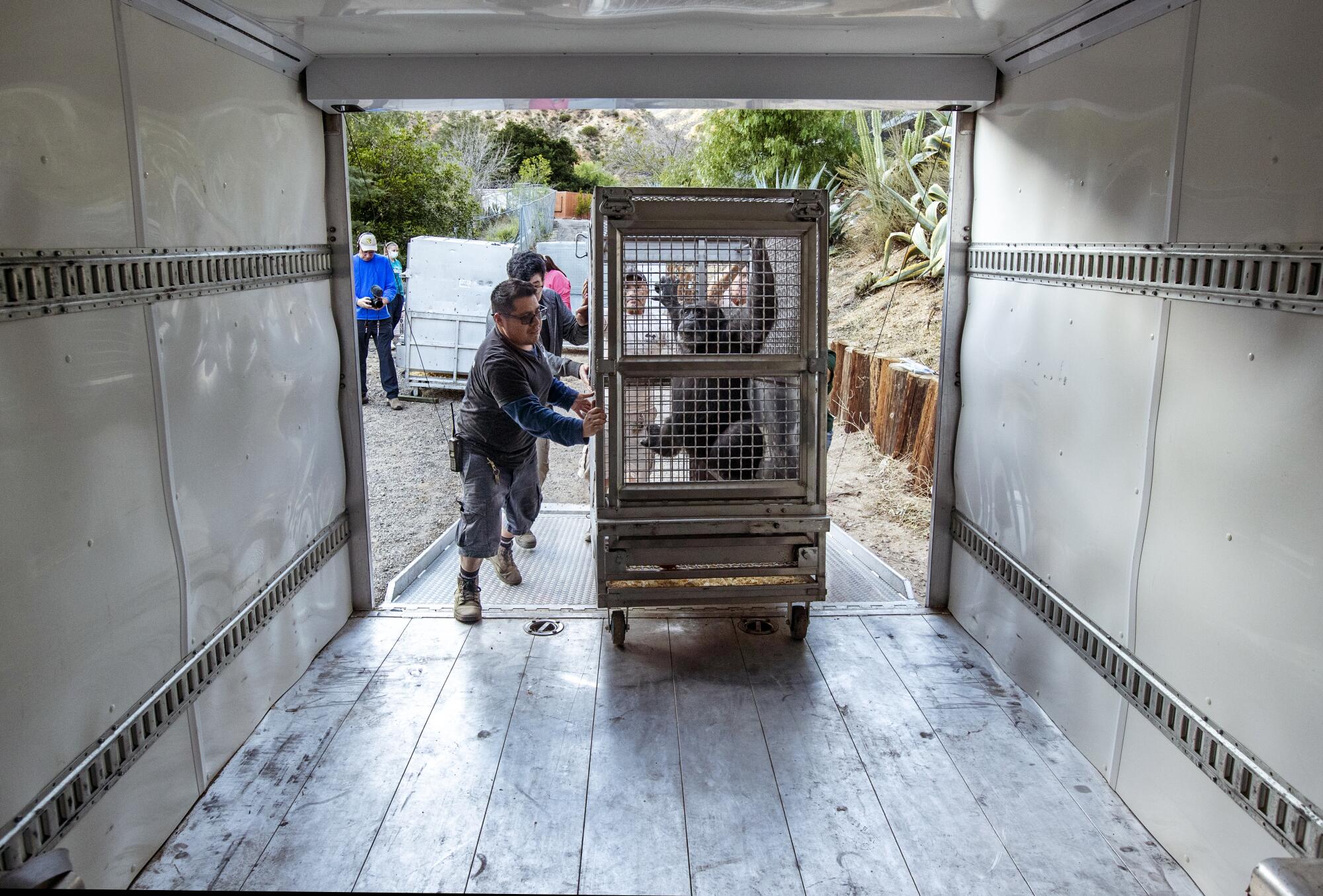
In the meantime, the state agency was paying about $100,000 a month to sustain the chimps with food, water, veterinary care, insurance and security.
The group also raised roughly $5 million from private donors to install new accommodations for most of the chimps at the Center for Great Apes in Florida, Primarily Primates Inc. in Texas, Chimpanzee Sanctuary Northwest in Washington, Save the Chimps in Florida, and Chimp Haven.
Two chimps, however, died at the Wildlife Waystation due to medical problems.
“We’re trying to raise another roughly $500,000 to support the immediate care costs for the 10 chimps going to Chimp Haven,” said Erika Fleury, program director at the North American Primate Sanctuary Alliance. “Overall, it’s a miracle we’re approaching the finish line.”
The future of the property tucked in a rugged canyon remains uncertain. At least one prospective buyer expressed an interest in turning it into a campground with resort-style services, officials said.
On a recent weekday, as they walked among the empty cages, ruins and relics, board member Thompson and Anher Flores, 50, a caretaker the facility for 33 years, recalled better times.
“We were surrounded by the sights and sounds of howling wolves, cackling hyenas, roaring lions and hooting chimps,” said Thompson, 36, wiping away tears. “It was the best lullaby ever.”
Flores made sure to console the chimps with soothing words and fresh apples and oranges as they were loaded onto the truck.
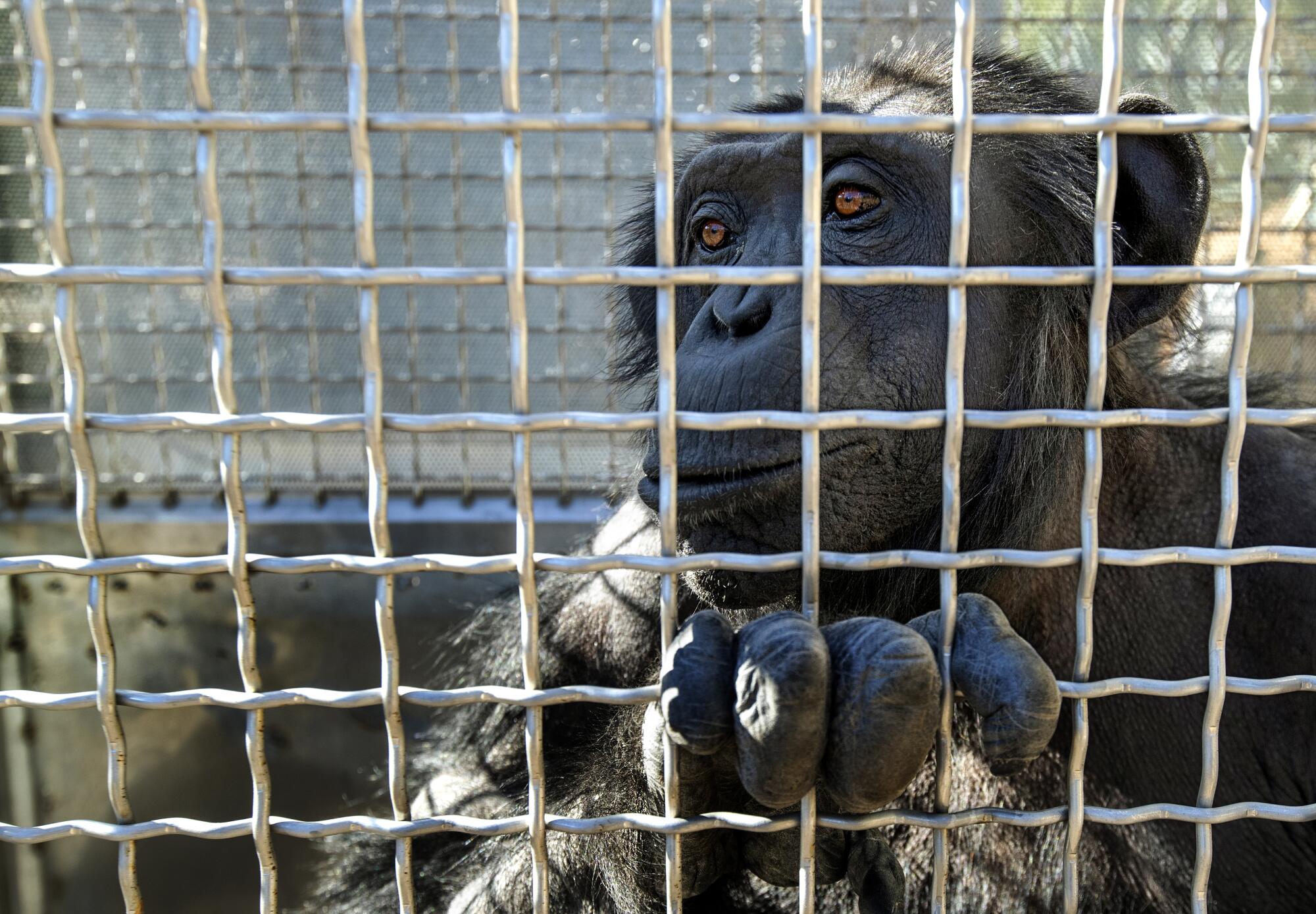
Among them was Inky, 29, who reached out of her transport crate and held his hand as if to ask, “Is everything going to be all right? Do you know where we’re going?”
“Don’t worry, Inky,” he said. “You’re going to a better a place.”








